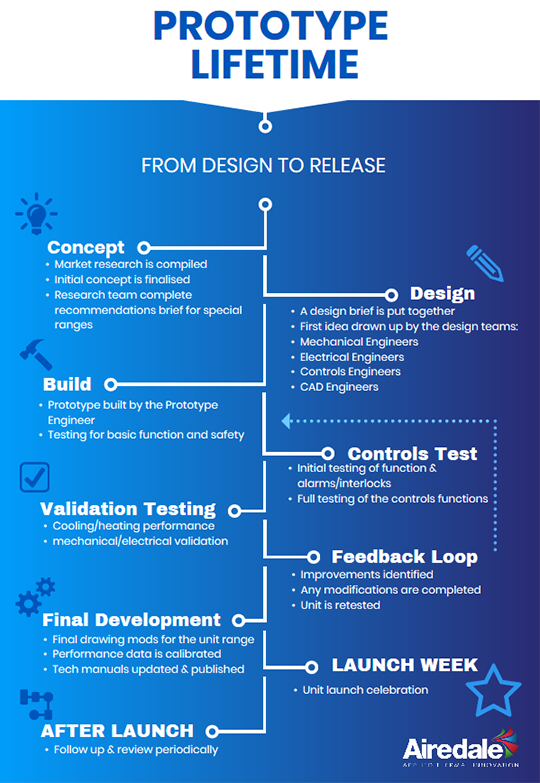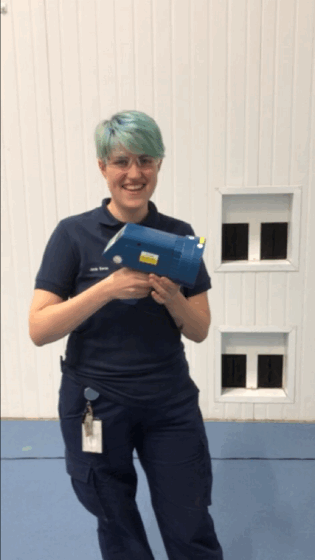Prototype Lifetime
In July we released two new R32 chiller ranges (Azure) so in the last R&D blog we discussed F-gas. However, now I would like to delve into the world of Research & Development here at Airedale. Specifically, what actually goes on in the background to produce a brand new product.
When a new concept or an update of an existing unit is approved, extensive testing is conducted to qualify the performance. We all know that an initial idea is not always perfect and there are usually real life factors that can be missed – no one can possibly account for everything. Like when you plan a long drive after rush hour to avoid traffic but there’s an accident on the M6.
Our R&D department works through a number of steps in a process to ensure we iron any issues with the performance of our models:

A concept is designed and a prototype is born
Design engineers create the concept and model a prototype which is then built and tested in our on-site test laboratory. This is a long process with many stages of testing to validate every possible realistic condition at which the unit will perform. Taking into consideration the Leeds climate is vastly different to the weather in Dubai, for example!
What’s first?
The main testing, as you’d expect, is qualifying the actual cooling performance. The air conditioner or chiller is installed in one of the test chambers in the laboratory. A large number of air temperature probes and pressure transducers are applied to/around the unit which feed live to a data acquisition. This is basically a panel which allows the sensors to communicate with our PCs.
We use a software called LabVIEW to see live graphs of all the temperature, pressure and power measurements for the unit under test – this data is scanned and saved every 5 seconds! Each test data is then analysed…. And then repeat.
On top of the extensive number of conditions we test the cooling performance at, there are many other additional stages of validation which aren’t so obvious. For example, ensuring on a very humid day, the Artus would not collect condensation on the fascia and start dripping on people in an office. Also the pipework vibrations are checked to make sure they won’t crack and leak all of the refrigerant. One of the methods we use is via a Stroboscope – literally a strobe which helps slow the visual movement. See one in action here and more about how they work here.
 Stroboscope in Action
Stroboscope in Action
Time to launch
After extensive testing has been completed… it’s finally time to release the product. This isn’t the end of the process though! We continue to update and modify our products based on feedback from our quality department as well as from our service engineers in the field. We are committed to innovation.
A prototype unit will find itself in the test centre between 18 to 24 months. This varies because each unit is different and we use the test chambers for other types of testing. For example, component testing and customer witnessed tests – which we will come onto in a future blog post.
Airedale invests a huge amount of resource into research and development; which really allows us to work together to produce the high quality products that we’re known for. We work hard to ensure each and every product is designed to challenge the previous generation’s technologies.
Innovation is all about pushing the boundaries of industry and we believe this is absolutely vital! For us, this means engineering the cooling solutions for the future, no matter what is thrown our direction.

Author:
Jade Swan-McCay BEng (Hons)
Laboratory Engineer, Airedale International
Connect on Linkedin







